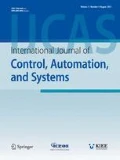Abstract
Advances in convolutional neural networks (CNNs) have driven the development of computer vision. Recent CNN architectures, such as those with skip residual connections (ResNets) or densely connected architectures (DenseNets), have facilitated backpropagation and improved the performance of feature extraction and classification. Detecting objects in underwater environments by analyzing sound navigation and ranging (sonar) signals is considered an important process that should be automated. Several previous approaches have addressed this challenge; however, there has been no in-depth study of CNN architectures that effectively analyze sonar grams. In this paper, we have presented the identification of tonal frequencies in lofargrams using recent CNN architectures. Our study includes 175 CNN models that are derived from five different CNN architectures and 35 different input patch sizes. The study results showed that the accuracy of the best model was as high as 96.2% for precision and 99.5% for recall, with an inference time of 0.184 s.
Similar content being viewed by others
References
J. C. Martino, J. P. Haton, and A. Laporte, “Lofargram line tracking by multistage decision process,” IEEE International Conference on Acoustics, Speech, and Signal Processing, vol. 1, pp. 317–320, 1993.
N. R. O., “Sonar signal processing,” Artech House Inc., 2011.
R. R. N. N. Moura, and J. M. Seixas, “Passive sonar signal detection and classification based on independent component analysis,” Sonar Systems, IntechOpen, 2011.
R. H. Baran and J. P. Coughlin, “A neural network for target classification using passive sonar,” Proc. of the Conference on Analysis of Neural Network Applications, pp. 188–198, 1991.
C. Chin-Hsing, L. Jiann-Der, and L. Ming-Chi, “Classification of underwater signals using wavelet transforms and neural networks,” Mathematical and Computer Modelling, vol. 27, no. 2, pp. 47–60, 1998.
M. Khishe and M. Hassan, “Passive sonar target classification using multi-layer perceptron trained by salp swarm algorithm,” Ocean Engineering, vol. 181, pp. 98–108, 2019.
M. Khishe and M. R. Mosavi, “Classification of underwater acoustical dataset using neural network trained by chimp optimization algorithm,” Applied Acoustics, vol. 157, 2020.
R. P. Gorman and T. J. Sejnowski, “Learned classification of sonar targets using a massively parallel network,” IEEE Transactions on Acoustics, Speech, and Signal Processing, vol. 36, no. 7, pp. 1135–1140, July 1988.
R. P. Gorman and T. J. Sejnowski, “Analysis of hidden units in a layered network trained to classify sonar targets,” Neural networks, vol. 1, no. 1, pp. 75–89, 1988.
Q. H. M. R. Azimi-Sadjadi, D. Yao, and G. J. Dobeck, “Underwater target classification using wavelet packets and neural networks,” IEEE Transactions on Neural Networks, vol. 11, no. 3, pp. 784–794, May 2000.
D. P. Williams, “Underwater target classification in synthetic aperture sonar imagery using deep convolutional neural networks,” Proc. of 23rd International Conference on Pattern Recognition (ICPR), IEEE, pp. 2497–2502, 2016.
A. Galusha, J. Dale, J. Keller, and A. Zare, “Deep convolutional neural network target classification for underwater synthetic aperture sonar imagery,” in Detection and Sensing of Mines, Explosive Objects, and Obscured Targets XXIV, vol. 11012, International Society for Optics and Photonics, p. 1101205, 2019.
O. Russakovsky, J. Deng, H. Su, J. Krause, S. Satheesh, S. Ma, Z. Huang, A. Karpathy, A. Khosla, M. Bernstein, A. C. Berg, and L. Fei-Fei, “ImageNet large scale visual recognition challenge,” International Journal of Computer Vision (IJCV), vol. 115, no. 3, pp. 211–252, 2015.
J. Park and D.-J. Jung, “Identifying tonal frequencies in a lofargram with convolutional neural networks,” Proc. of 19th International Conference on Control, Automation and Systems (ICCAS), 2019.
G. Huang, Z. Liu, L. van der Maaten, and K. Q. Weinberger, “Densely connected convolutional networks,” Proc. of the IEEE Conference on Computer Vision and Pattern Recognition, pp. 4700–4708, 2017.
K. He, X. Zhang, S. Ren, and J. Sun, “Deep residual learning for image recognition,” Proc. of the IEEE Conference on Computer Vision and Pattern Recognition, pp. 770–778, 2016.
R. E. Hansen, “Synthetic aperture sonar technology review,” Marine Technology Society Journal, vol. 47, no. 5, pp. 117–127, 2013.
G. M. Wenz, “Acoustic ambient noise in the ocean: Spectra and sources,” The Journal of the Acoustical Society of America, vol. 34, no. 12, pp. 1936–1956, 1962.
J. Redmon, S. Divvala, R. Girshick, and A. Farhadi, “You only look once: Unified, real-time object detection,” Proc. of the IEEE Conference on Computer Vision and Pattern Recognition, pp. 779–788, 2016.
K. He, G. Gkioxari, P. Dollar, and R. Girshick, “Mask R-CNN,” Proc. of the IEEE International Conference on Computer Vision, pp. 2961–2969, 2017.
V. Nair and G. E. Hinton, “Rectified linear units improve restricted boltzmann machines,” Proc. of the 27th International Conference on Machine Learning (ICML-10), pp. 807–814, 2010.
S. Ioffe and C. Szegedy, “Batch normalization: Accelerating deep network training by reducing internal covariate shift,” arXiv preprint arXiv:1502.03167, 2015.
Author information
Authors and Affiliations
Corresponding author
Additional information
Publisher’s Note Springer Nature remains neutral with regard to jurisdictional claims in published maps and institutional affiliations.
Recommended by Associate Editor Mien Van under the direction of Editor Euntai Kim.
Jihun Park received his B.S., M.S., and Ph.D. degrees in computer science from KAIST in 2010, 2012, and 2016, respectively. His research interest include object detection, drone defense, and sonar analysis.
Dae-Jin Jung received his B.S. degree in information and computer engineering from Ajou University in 2010, and the M.S. and Ph.D. degrees in computer science from KAIST, in 2012 and 2016, respectively. His research interests include digital multimedia processing and sonar analysis.
Rights and permissions
About this article
Cite this article
Park, J., Jung, DJ. Deep Convolutional Neural Network Architectures for Tonal Frequency Identification in a Lofargram. Int. J. Control Autom. Syst. 19, 1103–1112 (2021). https://doi.org/10.1007/s12555-019-1014-4
Received:
Revised:
Accepted:
Published:
Issue Date:
DOI: https://doi.org/10.1007/s12555-019-1014-4




